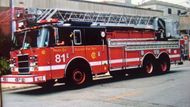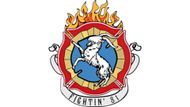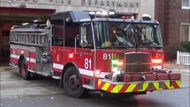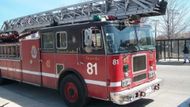You’ve watched it racing down Chicago streets, lights flashing, sirens blaring — and if you’re a Chicago Fire fan, you can just picture what Truck 81 is. But this isn’t only an awesome-looking red rig. Truck 81 is its own personality. It’s the pulse of Firehouse 51, the headquarters of some of the most explosive, emotional, and memorable scenes in the entire One Chicago franchise.
Chicago Fire hit screens back in 2012, and it’s grown far beyond just being a TV show about firefighters. Written by Derek Haas and Michael Brandt and executive produced by television mogul Dick Wolf, the series spun off an entire franchise (Chicago P.D., Chicago Med, and the short-lived Chicago Justice) — but it’s Fire that lit the spark.
With more than a decade of television time and over 270 episodes as of May 2025, Chicago Fire has created a loyal fan base by incorporating top-shelf rescues with everyday drama, close friendships, and forays into the reality of how things are in a working firehouse.
Chicago Fire is set at the fictional Firehouse 51 and follows the crews of Engine 51, Truck 81, Rescue Squad 3, and Ambulance 61. But focus on Truck 81 — the ladder truck that has been part of the family since the beginning. It’s witnessed it all: fires, crashes, explosions, breakups, and bravery.
But Truck 81 is not an arbitrary designation. In firehouse jargon, “truck” refers to a ladder truck (as distinguished from an “engine,” which carries water and shoots it out). It serves a specific purpose in fireground operations like ventilation, search and rescue, and forcible entry. All the vehicles at Firehouse 51 are given a number and a function, and the audience of the show is aware that the numbers matter.
Truck 81 is unique not only for what happens in it, but for how it’s surrounded by culture. Chicago Fire goes the extra mile to preserve real firehouse life — like rituals, ranks, locker-room banter, and even inside humor. A classic example is Truck 81’s goat logo. It’s mysterious, humorous, and oddly meaningful, just like the firehouse itself.
Throughout the years, the goat has been an unofficial mascot of both the fans and the cast, symbolizing the odd, proud traditions that make Firehouse 51 its own.
It's so compelling because Chicago Fire doesn’t simply invent its world of the firehouse. It takes from the real fire service culture. The slang, the gear, the chain of command — everything is borrowed from the way actual firefighters work, particularly in a big city like Chicago.
Real Chicago firemen have even appeared on the show in cameo roles, and producers also consult with experts on a regular basis to make it all as realistic as possible.
So if you’ve ever wondered what makes Truck 81 special — or why fans obsess over something as simple as a number on a truck — it’s because it represents something bigger.
Truck 81: Introduction and significance in Chicago Fire

Truck 81 is introduced right away in the pilot season of Chicago Fire, which premiered on October 10, 2012. It’s clear that Truck 81 is an integral part of Firehouse 51, manned by a committed crew proven time and again in the line of duty. As a ladder truck, Truck 81 is charged with conducting a host of specialized operations like search and rescue, ventilation, and forcible entry.
Throughout the course of the series, Truck 81 is a literal and symbolic vehicle for much of the show’s main storylines. Shifts commanded by favorites like Lieutenant Matthew Casey and Firefighter Christopher Herrmann often find themselves in the thick of it.
The goat crest: A symbol of tradition

Perhaps the most striking thing about Truck 81 is its goat crest — a brazen, horned emblem bearing the phrase “Fightin’ 81.” Fireman Brian “Otis” Zvonecek asks about the history of the crest in Season 1, Episode 2. There are many stories: one attributes it to the first call of Truck 81 to a goat farm; another suggests the firehouse used to have a goat kept as a lawnmower; another brings up Chicago’s famous Curse of the Billy Goat.
But the truth, revealed by Chief Wallace Boden, is closer to home and more emotional: the goat honors Firehouse 51’s first chief, Billy “Goat” Bukanski, who was Boden’s mentor.
To fully understand Truck 81’s significance, it’s useful to untangle the slang used across the show — much of it taken directly from real-life firefighting.
Truck Company: A ladder truck crew focusing on ventilation, search and rescue, and forcible entry.
Engine Company: Keeps the majority of its resources for water supply and fire extinguishment.
Rescue Squad: Handles high-hazard technical rescues like vehicle extrication and hazardous materials incidents.
Battalion: A group of companies led by a Battalion Chief.
Company Officer: A lieutenant or captain leading a specific unit.
Fireground: An active area where firefighting operations are underway.
Collapse Zone: A safety perimeter around a building that could collapse in the event of a fire.
Fire Load: A measurement of the potential intensity of a fire based on combustible materials in an area.
The role of Truck 81 in firehouse operations

As a ladder truck, Truck 81 plays a significant role in emergency operations. Its primary duties include:
Ventilation: Opening roofs or windows to release smoke and heat.
Forcible Entry: Breaking into locked or blocked structures using specialized tools.
Search and Rescue: Entering hazardous buildings to locate and extract victims.
Ladder Operations: Extending ground and aerial ladders for rescue, roof access, or high-stream water delivery.
These responsibilities demand coordination, precision, and technical skill. Truck 81 works in tandem with engine companies and rescue squads to form a complete emergency response.
Major Chicago Fire episodes where Truck 81 played a pivotal role

Season 1, Episode 3 – Professional Courtesy
A teen is paralyzed in a devastating crash, and Truck 81 responds first. The situation becomes morally complicated when the intoxicated driver is discovered to be the son of corrupt cop Hank Voight.
The team pulls off a smooth rescue under stress, but the core of the episode is the team’s moral strength. Casey, speaking for Truck 81 and Firehouse 51, takes a stand against corruption. His team’s backing of his stand shows the integrity of the firehouse. The decision to build a wheelchair ramp for the victim using donated TV funds further adds emotional depth.
Season 3, Episode 3 – Just Drive the Truck
Two firehouses crash into each other—literally. While racing to the rescue, Truck 81 smashes into Truck 66 of the Austin Firehouse. The outcome is not merely a crumpled mess of metal, but strained nerves, battered pride, and professional criticism.
Even though they are involved in the accident, Truck 81’s crew immediately moves from victims to responders. Their devotion to duty afterward is an example of firehouse resiliency. The show also addresses difficult issues—driver accountability, snap judgments, and inter-house competition—illustrating the emotional burden firefighters bear. Cruz’s personal self-examination as the driver is an intense reflection on accountability and change.
Season 12, Episode 11 – Inside Man
In the series’ most terrifying moment, Truck 81 is stolen from within Firehouse 51 by manacled criminals intent on using it to deliver a bomb. Severide, left behind alone during the robbery, finds himself both hostage and hero.
Severide’s bravery and quick thinking save the day. Even though he is handcuffed and in danger, he discreetly notifies the fire station and foils the hijackers’ plot by setting a fire within the hijacked truck. Although the truck is ultimately destroyed in the blast, the self-sacrifice averts a disaster with a large number of casualties.
This is a symbolic episode: the actual loss of Truck 81 signals the end of an era, but its final act saves many lives—emphasizing the ultimate goal of the fire department: protection at all costs.
